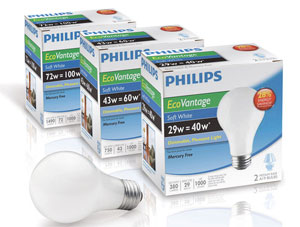Only days before the government financing runs out, the House and Senate agreed on a $1 trillion compromise bill that appropriates funds for federal government agencies through September 30, 2014.
For the environmental and cleantech community, some huge problems were avoided as Republicans agreed to leave these two wish-list items out:
- Stripping the Environmental Protection Agency (EPA) of its ability to regulate greenhouse gases or toxic emissions from coal plants;
- Reversing Clean Water Regulations
Miraculously, most energy and environment programs made it through intact, but still at low levels after years of cuts and the sequester. The Department of Energy’s funding prioritizes fossil fuel research over clean energy, however.
Republicans achieved relatively minor wins on this front: their long-cherished goal of making sure outdated lightbulbs are still available; and policies that protect coal mining firms. Funding for railroads got cuts.
On climate change, a ban on regulating factory farm emissions continues; the administration is required to report to Congress on its climate activities; and the EPA is ordered to resolve differences with states over regional haze rules. A low level of continued funding remains for the Yucca Mountain nuclear waste site in Nevada.
War on Coal
A key outcome of President Obama’s climate change speech was that the The World Bank, Overseas Private Investment Corp. (OPIC) and Export-Import Bank of the US all revised their policies to stop financing new coal plants overseas.
But House Appropriations Committee Chair Hal Rogers (R-KY) managed to insert language in the Appropriations bill that bars OPIC and the Ex-Im Bank from putting this policy in place – it says coal plants must be funded if shown to positively impact US trade or employment.
"Coal exports are just about the only bright light in the coal business these days," says Rogers.
He also got a rider through that prevents regulations on mountaintop
mining that keep wastes – chemicals and fill materials (what used to be soil and rock before they blew off the mountaintop) – from being dumped into streams. It also speeds up permits for coal companies, bars any new fees, and cuts funding for EPA to monitor mining and related chemical facilities from the air (even after the West Virginia chemical spill).
Funding for carbon capture and storage research got a boost at $390 million.
Light Bulb War
As in the 2012 Omnibus bill, Republicans inserted a measure that "bans the Administration’s onerous light bulb standard."
As of January 1, the US can no longer import or manufacture the inefficient incandescents of the past, and all the manufacturers are on board, already selling the very same bulbs – except for being 30% more efficient (saving a typical household $100 a year on electric bills, according to the Natural Resources Defense Council (NRDC)).
Here’s what the new incandescents look like, can you tell the difference?

So, what affect could blocking the Department of Energy from implementing or enforcing this law have?
"Since the rider prohibits
enforcement of the standards, it opens the door to foreign lighting factories
and importers that would seek to sell substandard, energy-wasting bulbs,
threatening US manufacturing and domestic jobs," says Steve Nadel, Executive Director of the American Council for an Energy Efficient Economy (ACEEE).
As they said the last time Republicans did this: General Electric, Philips, Osram Sylvania and other lighting makers say they are fuming about "GOP’s bid to undercut them." They’ve spent four years and millions of dollars preparing for the standards, and they don’t want potential "bad actors" to be able to sell inefficient light bulbs without fear of federal enforcement.
NRDC says the change is mostly "just political theater" because the 2007 law (signed by Pres. Bush) remains in place. They note the thousands of new jobs the law has already created in manufacturing, R&D, design and
marketing of new lighting options.
"Ill-conceived efforts
like this rider distract us and move us a backward as a nation, not forward, on
efforts to build a clean energy economy," says Elizabeth Heyd of NRDC.
++++
E&E provides a good wrap-up of specific funding levels and details for key agencies – Department of Energy, EPA, Interior:
